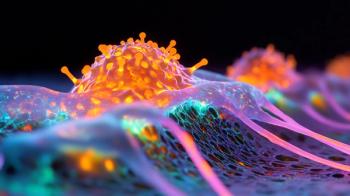
European Study Confirms Safety and Efficacy of Zolgensma in SMA
This European study enrolled patients with more severe cases of spinal muscular atrophy than a similar study conducted in the U.S.
Zolgensma (onasemnogene abeparvovec-xioi) shows efficacy in patients with severe spinal muscular atrophy (SMA), according to findings recently published in
Results from a phase 3 study called
A treatment of Zolgensma is priced at more than $2 million, and Zolgensma is often identified as the most expensive drug treatment ever.
SMA is a rare,
Zolgensma was approved by the FDA in May 2019 for patients less the two years of age with mutations of the SMN1 gene. The therapy provides a functional copy of the gene in a single, one-time infusion. In the U.S.
The STR1VE-EU is a single-arm phase 3 trial done at nine sites in Italy, the United Kingdom, Belgium, and France. Investigators enrolled patients younger than 6 months with spinal muscular atrophy type 1 with the SMN1 exon 7–8 deletion or point mutations, and one or two copies of SMN2. Thirty-two of 33 patients completed the study.
Investigators reported in Lancet Neurology that they found that 14 of the 32 patients achieved the primary end point of functional independent sitting for at least 10 seconds at any visit up to the 18 months of age, which is a WHO developmental milestone of independent sitting. None of the 23 patients in a matched, untreated natural history cohort achieved this end point.
Additionally, 31 of 32 of the patients who received Zolgensma survived free from permanent ventilatory support at 14 months.
Improvements in motor function were evaluated in the safety and efficacy using prespecified exploratory motor end points. Twenty-seven of the 33 patients achieved at least one motor milestone during the study. Investigators found that 3 patients achieved head control and 19 patients rolled from theirs back to their sides. In addition, 16 patients sat without support for 30 seconds or longer.
Almost all patients in the EU trial had at least one adverse event and six patients had adverse events that were considered serious and related to the therapy. The most common adverse events were fever (22 patients), upper respiratory infection (11), and increased alanine aminotransferase (nine).
“STR1VE-EU showed the efficacy of onasemnogene abeparvovec, with greater variability in efficacy response than in STR1VE-US because of differences in patient clinical status at baseline.Some of these patients had early onset and more severe disease at enrollment than did patients in STR1VE-US, but showed a response to treatment not only in terms of survival but also in functional aspects,” the investigators wrote.
Newsletter
Get the latest industry news, event updates, and more from Managed healthcare Executive.

















































